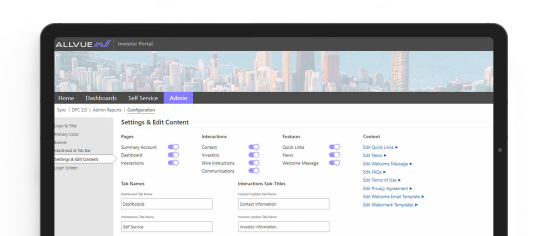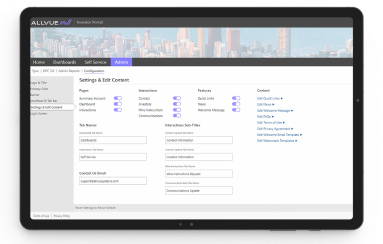
By: Richard Change
Head of PFA Solutions
March 28, 2025
If you’re managing or structuring the compensation and carry program at your private equity firm, you’re likely facing the complex challenge of balancing competitive incentives with firm profitability and long-term alignment. Compensation in private equity isn’t simply about attracting talent—it’s about motivating your team to consistently drive value creation and aligning their interests closely with your investors.
In this guide, I’ll outline key considerations and best practices for structuring private equity compensation programs, including base salaries, performance-based bonuses, and carried interest distributions.
Structuring Compensation Across Firm Hierarchy
Structuring compensation across the firm hierarchy requires tailoring rewards to reflect each level’s unique responsibilities and contributions, thereby driving performance and fostering long-term alignment.
Analysts
Analysts typically receive base salaries ranging from $100,000-$150,000, with bonuses tied to their individual and team performance. Structuring clear performance metrics tied to deal execution efficiency, quality of analysis, and teamwork helps ensure analysts remain motivated and focused.
Associates
Associates have elevated responsibilities and expect higher compensation reflecting their roles in deal execution and portfolio company oversight. Base salaries generally range from $125,000-$170,000, and bonuses can double their base salaries in strong performance years. Some firms begin to offer associates small carried interest allocations as a powerful retention and motivation tool.
Vice Presidents
VP compensation needs careful structuring, reflecting their essential role in leading deals, client management, and team leadership. Base salaries usually fall between $210,000-$280,000, with substantial bonuses ranging from 100-150% of their base salary. Carry allocations for VPs often become meaningful, incentivizing long-term firm alignment.
Principals and Directors
Principals and directors are central to the investment decision-making process. Their compensation structure, typically comprising base salaries between $250,000-$400,000 and bonuses between 150-200%, should strongly emphasize carried interest allocations to reward long-term performance and value creation.
Managing Directors and Partners
At the senior-most levels, compensation structuring is deeply intertwined with firm profitability and long-term strategy execution. Base salaries of $500,000+ and bonuses exceeding 200% of base salary are common. However, the largest component of compensation typically comes from significant carried interest allocations, reinforcing long-term commitment and alignment with investor returns.
Optimizing Carried Interest Structures
As the manager of a compensation and carry program, your most critical tool for alignment is carried interest. Typically set at 20% of fund profits, carried interest incentivizes team members to prioritize long-term success over short-term gains. Here’s how to strategically manage carry distribution:
1. Establish Transparent Hurdle Rates and Distribution Thresholds
Clearly define the hurdle rate—typically between 6-8%—and outline a straightforward, transparent calculation method. This approach builds trust across the organization, ensuring every team member understands how their performance directly impacts their personal financial outcomes.
2. Implement Tiered Carry Allocation Based on Responsibility
Reserve the highest carry allocations for senior decision-makers such as MDs, partners, principals, and directors, whose strategic roles warrant significant rewards. At the same time, structure allocations thoughtfully to provide meaningful, albeit smaller, carry opportunities for emerging leaders like VPs and high-performing associates. This balanced approach not only recognizes current contributions but also incentivizes future leadership and talent retention.
3. Balance Short-term Rewards with Long-term Incentives
Combine immediate performance bonuses for successful deals and annual achievements with long-term carried interest vesting schedules. Clearly defined vesting periods and distribution timelines ensure that incentives are aligned with both immediate business objectives and sustainable value creation, keeping the team motivated over the long run.
Factors Influencing Compensation Decisions
Compensation decisions are driven by a blend of internal performance metrics and external market dynamics, ensuring that reward structures remain competitive and aligned with each firm’s unique context.
Performance and Market Conditions
Regularly assess fund performance metrics, including IRR and MOIC, to calibrate bonuses and carry distributions effectively. During market upswings, larger bonuses and carry distributions are justifiable, while during downturns, clearly communicated expectations help manage team alignment.
Firm Size and Geography
Recognize the influence of your firm’s size and geographic location on competitive pay levels. Mega-funds naturally offer higher base salaries and bonuses, while smaller firms can leverage faster progression opportunities and higher carry allocations as attractive incentives.
Maximizing Firm and Employee Alignment
A unified approach that combines transparent compensation negotiations with continuous talent development ensures every team member’s efforts directly drive the firm’s overall success.
Negotiating and Structuring Compensation
Establish clear expectations during compensation negotiations by providing full transparency on all components—base salary, bonus, and carry. Clearly outlining how these elements interact helps employees understand exactly how their individual contributions drive their earnings.
Developing Talent
Invest in your team’s professional growth by fostering skill development, offering leadership opportunities, and cultivating specialized industry expertise. A well-rounded and highly skilled workforce not only enhances fund performance but also supports the case for competitive, performance-based compensation.
Leveraging Technology for Compensation Management
Navigating a complex compensation structure can be challenging. Allvue Systems’ advanced carry and compensation software simplifies this process by accurately tracking, calculating, and distributing salaries, bonuses, and carried interest—all while ensuring compliance.
By strategically designing your firm’s compensation and carry program, you not only attract and retain top talent but also drive consistent value creation and maintain long-term alignment across the organization.
For private equity firms, investment managers, and compensation professionals seeking to streamline their processes, Allvue Systems offers a powerful, comprehensive solution. Our platform ensures fair and precise distribution of incentives, helping you manage payouts efficiently.
Experience greater operational efficiency—request a free demo and discover how FirmView®, an Allvue solution can transform your compensation management.
Sources
Efinancialcareers. Private equity can still pay eight figures, even in 2024. https://www.efinancialcareers.com/news/private-equity-pay
More About The Author

Richard Change
Head of PFA Solutions
Richard Change joins Allvue as a member of the senior leadership team, following Allvue’s acquisition of PFA Solutions. In 2012 he set out as co-founder to start PFA Solutions. As the former Chief Architect at a leading private equity firm, Richard Change saw a gap in data standards, as well as limitations on how firms stored and tracked investment information. PFA focused on technology solutions for calculating GP Carried Interest allocations, total compensation management and tracking consolidated investor and portfolio performance information across funds. In addition to his role at PFA Solutions, Richard works with various industry committees and serves on the board on various local organizations. Prior to co-founding PFA Solutions, Richard was the Chief Application Architect at The Carlyle Group. He has over 20 years of technology experience and a deep understanding of fund operations, performance management, carry and co-invest within the Private Capital markets.


